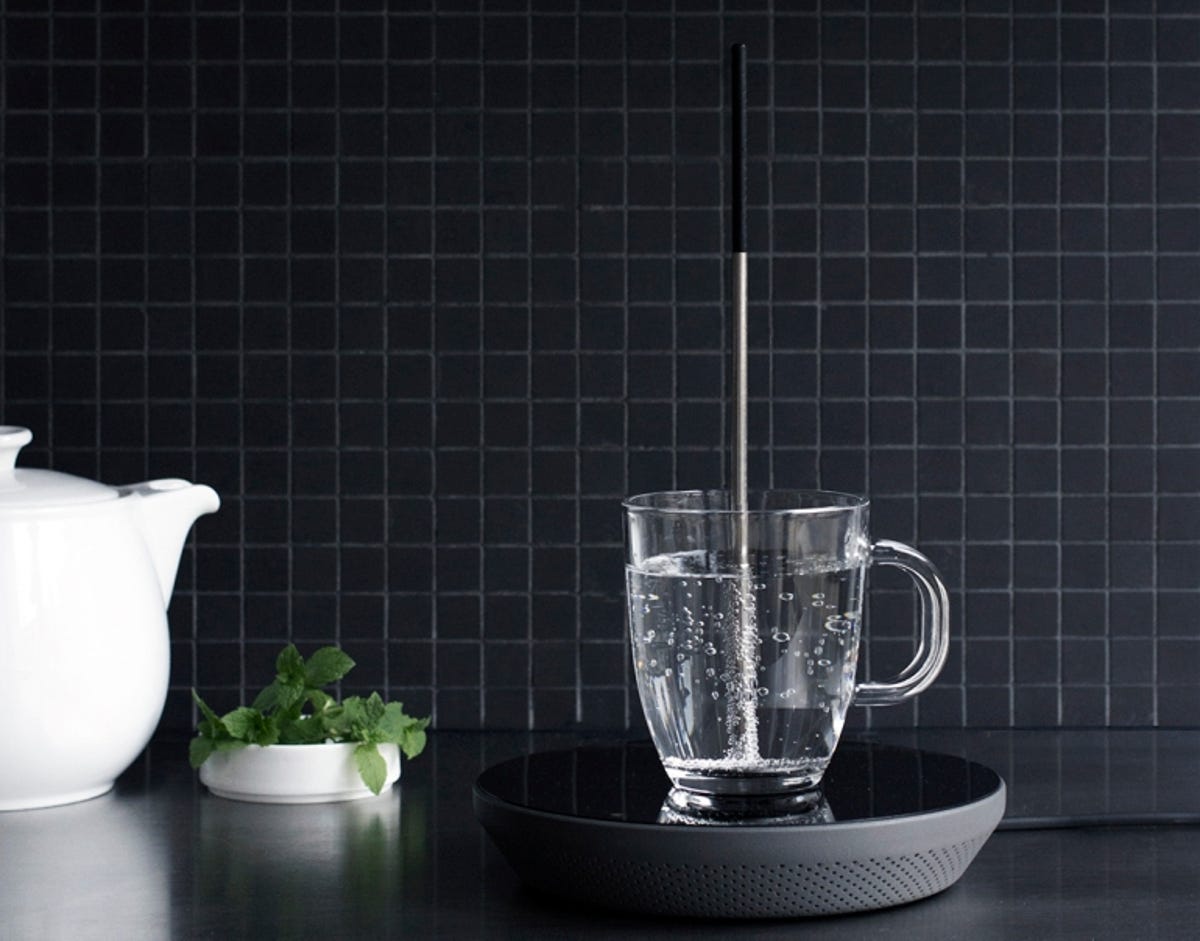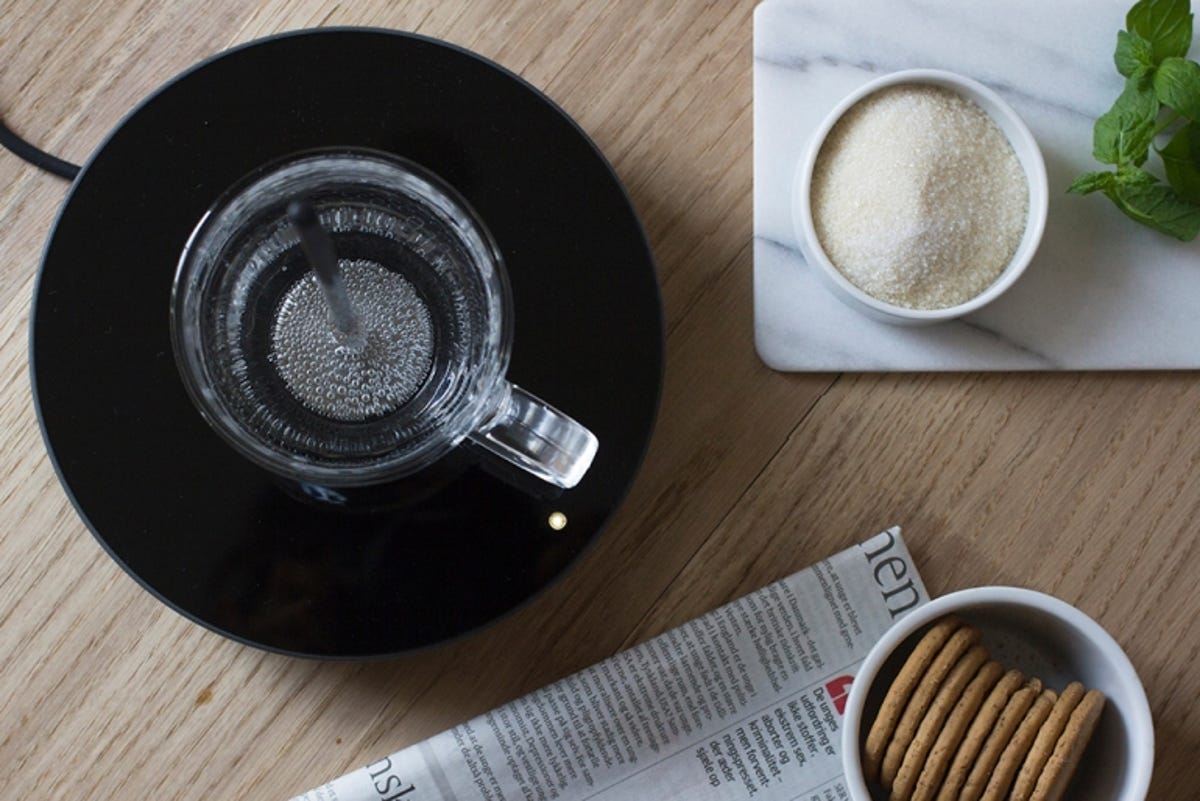
Studio Chudy and Grase
A 2013 report found, in the UK alone, £68 million was being wasted every year from one single factor: overfilling kettles. That is the cost of electricity used to boil water that then never gets used. Of course, it’s difficult to gauge exactly how much water you’ll need for one cup when filling something like a kettle; so overfilling is the best course of action, since it is better to have too much water than too little.
A new device called Miito, however, aims to take the guesswork out of the quantity of water required — by heating the water in your cup directly.
Related articles
- It’s a kettle. It’s a charger. It’s KettleCharge!
- Appliance Science: The hot physics of induction cooktops
- Exploring the home energy angle in a water crisis
The set-up consists of an induction plate and a rod with a disc on the bottom and an insulation-coated tip for safe handling. The rod is placed in your cup of water on the induction plate to heat the water inside.
“Simply fill your cup with water, place it on to the induction base and immerse the rod in the liquid. The induction base heats the rod, which then heats the liquid surrounding it. Miito works with non-ferrous vessels of any size, for example a pot of tea when inviting guests. Miito can also heat your soup or milk for a coffee. The clean shape of the rod allows it to be cleaned easily,” the Miito website explains.


Studio Chudy and Grase
The device uses a form of electrical induction for heating much like induction cooktops. The induction plate contains a coil that produces a high-frequency electromagnetic field when powered on. Normally this means very little; but when a magnetic material comes into contact with the plate, this closes a circulating electric current, which in turn produces heat in the rod.
The Miito prototype is functional, but it needs a bit more work until it’s ready for the market. First, the team — Studio Chudy and Grase — wants to develop the materials from which the rod is made. It needs to contain iron in order to interact with the induction plate, but a food-safe coating such as stainless steel, which is used in induction cooking pots, needs to be applied.
The device also needs to be monitored and removed from the cup manually — it doesn’t automatically shut off when the the liquid has reached the desired temperature. According to The Guardian, the team would like to be able to include temperature settings for various applications. The idea temperature for green tea, for example, is lower than the ideal temperature for black tea, and having automatic shut-off would enable the user to do other things while the Miito does its work.
The device, hopefully, should be ready by Q4 2016, with a retail price of around £80 (converting to about $125 or AU$155). The team hopes to crowdfund further development before that time and you can stay tuned to the Miito Facebook page for updates.




